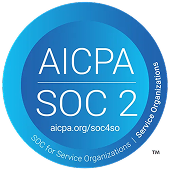AI Regulation in Australia: Top 10 Steps to Ensure Business Readiness
.avif)
.avif)
AI Regulation in Australia
The rapid pace of AI development has potential benefits across all industries, including healthcare, education, and finance. However, such innovation brings significant AI challenges, including privacy concerns, bias in algorithms, accountability issues, and the potential for AI to be used in harmful ways. These challenges necessitate a proactive regulatory response to ensure that AI technologies are developed and implemented responsibly.
For these reasons the Australian Government released an initiative to regulate AI in September 2024. Although none of the initiative’s regulations are enforced (yet), they are strongly encouraged to be adopted voluntarily by every company using AI.
The initiative emphasizes the need for comprehensive “guardrails” to address the complexities and risks associated with emerging AI technologies. As AI's capabilities expand, the Australian government recognizes the necessity of a regulatory framework that balances innovation with ethical considerations and public safety.
Compliance Guide to Australian AI Regulations
Enkrypt AI developed 10 AI safety and security guidelines to help enterprises ensure they are compliant with the latest Australian AI regulations. The guidelines combine best practices for both process and technology that our experts can help you implement.
- Set up clear frameworks for accountability, governance and compliance strategies.
- Be sure to include industry regulations and global compliance AI frameworks in your strategic plans (like OWASP Top 10 LLM, NIST, and MIRE ATLAS).
- Implement process to identify and manage AI risks effectively.
- Detect, remove and monitor all AI risks with Enkrypt AI’s safety and security platform.
- Ensure the protection of AI systems and data quality through governance practices.
- Ensure your data is safe before it powers any Gen AI application with our data security audit capabilities.
- Test AI models before deployment and maintain ongoing monitoring afterward.
- See how you can attain seamless security at every stage of the AI build workflow.
- Enable Human oversight and allow meaningful intervention in AI systems when needed.
- Get customized solutions by industry and use case to ensure AI risk is managed effectively including human intervention.
- Provide end users with information about AI-drive decisions, interactions, and generated content.
- Gain critical insights and comprehensive visibility into all your AI applications to drive smarter, more informed decisions.
- Establish channels for individuals affected by AI systems to challenge the outcomes.
- Implement such channels with the help of our AI expert team.
- Promote transparency throughout the AI supply chain to manage risks effectively.
- Leverage real-time dashboard and reports for optimal transparency in all AI application performance, risk, and compliance.
- Keep detailed records to facilitate third-party compliance assessments.
- Manage AI compliance from violation detection and removal to real-time dashboards for 3rd party reporting.
- Perform conformity assessments to demonstrate adherence to regulatory guidelines.
- See how you can track regulatory frameworks and get action steps for compliance with monitoring, reporting, and dashboards.
By implementing these Top 10 guidelines, you’ll be able to harness the benefits of AI while minimizing potential risks.
Summary
We applaud Australia for its leadership in AI governance. Their regulatory framework will not only protect citizens but also promote innovation and ensure that AI technologies contribute positively to society. Enkrypt AI looks forward to working with the Australian government as we enter the new era of AI.






